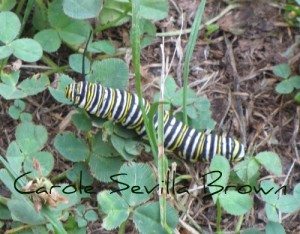Texas
Related: About this forumHistoric agreement will conserve nearly 450,000 acres for Monarch butterflies in Texas
The Texas Department of Transportation is enrolling 1.238 million acres of land, consisting of 73,038 center lane miles of highways and interstates, in the historic nationwide Monarch Butterfly Candidate Conservation Agreement for Energy and Transportation Lands administered by the University of Illinois-Chicago with the U.S. Fish and Wildlife Service.
Nearly 450,000 acres are being adopted in the agreement, which encourages transportation and energy partners to participate in monarch conservation by providing and maintaining habitat on millions of acres of rights-of-way and associated lands.
“The monarch butterfly is one of America’s most well-known native insects, but it has experienced significant population declines during recent decades,” said Amy Lueders, U.S. Fish and Wildlife Service Southwest Regional Director.
“Through the monarch butterfly CCAA, we’re working with energy and transportation partners to help save this iconic species and other pollinators. We are incredibly grateful to TxDOT for joining the agreement and stepping up to help improve habitat and actively contribute to the recovery of monarchs on the millions of acres of highways and interstates they manage.”
Read more: https://www.corsicanadailysun.com/news/historic-agreement-will-conserve-nearly-450-000-acres-for-monarch-butterflies-in-texas/article_5cb926ca-875c-11eb-8ae2-27e3a999037e.html
wiggs
(7,812 posts)town. And developing kits for residents to purchase for their own yards.
Percy
(721 posts)in CT. There are sites that tell you which plants they need but I understand milkweed is their main food.
Here's on of the sites for anyone interested:
https://www.nwf.org/Garden-for-Wildlife/About/Native-Plants/Monarch-Nectar-Guides
steventh
(2,143 posts)That's where monarchs lay their eggs. And be glad to see monarch caterpillars.
Correct me if I'm wrong but I think they eat parsley. That's where I've seen monarch caterpillars in my yard.

wiggs
(7,812 posts)they like but isn't good for them.
steventh
(2,143 posts)Seed Savers catalog lists "Common Milkweed (Asclepias syriaca)," and says, "Plant some today to help counter the increasing threat to the Monarch population." Unfortunately "out of stock." Do you know of another source?
https://lgvc.seedsavers.org/shop/common-milkweed-2/
Phoenix61
(17,003 posts)RandomNumbers
(17,600 posts)it isn't a bad choice for the caterpillars at all! But
- if you are in Texas you may want one of the more local natives. Some examples here - https://npsot.org/wp/story/2012/2235/
- Common milkweed (syriaca) spreads by rhizomes and can be difficult to control spreading to your neighbor's yard (if that's a concern for you). I know, I have lots of it, I'm a "lazy gardener" but am trying to be better about controlling the spread for several reasons.
wiggs
(7,812 posts)RandomNumbers
(17,600 posts)You are probably seeing black swallowtail caterpillars in your parsley. Also not bad to see but I don't think they are endangered like Monarchs are.
http://butterfly-lady.com/do-you-have-parsley-worms/
steventh
(2,143 posts)Thanks for the information and the link. Monarch and Black Swallowtail caterpillars are somewhat similar (in colors) but clearly distinguishable. I definitely have had black swallowtail butterflies in my garden.
Black Swallowtail caterpillar

Monarch caterpillar

pecosbob
(7,537 posts)back in the day...
Phoenix61
(17,003 posts)readily available is the tropical type. Based on the article, if you have it cut it all the way back in the winter. Even better, replace it with native milkweed when you can find it.
https://www.sciencemag.org/news/2015/01/plan-save-monarch-butterflies-backfires
BobTheSubgenius
(11,563 posts)There was a guy in our group of friends that was, of all things, a butterfly expert. If you knew him, and knew us, you'd think it was very unlikely, too. A bunch of us went up to this VERY remote cabin that another friend's uncle owned, and a small part of the trip was hunting butterflies for his collection.
While the variety we saw in the course of this trip was not Monarchs, it was still the most impressive butterfly display I ever saw, by a mile and a day. It was in the Cariboo region of central BC, which is very hot and dry in the summer. Driving along this dirt road, we were very surprised to see a small spring...but we only inferred the spring by the very large weeping willow growing there.
This tree was easily 40 feet across, and of similar height. What riveted our attention was that virtually every square inch of visible tree was covered by THOUSANDS of Swallowtails. I would have dearly loved to see what it looked like when they all took flight, but we didn't want to disturb them. They were clearly up to something.